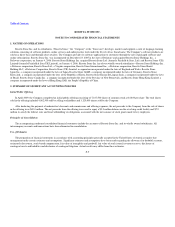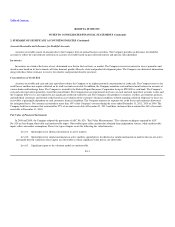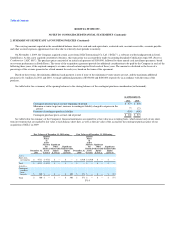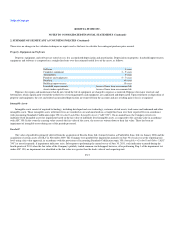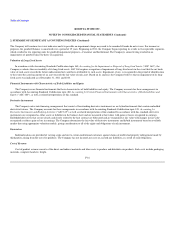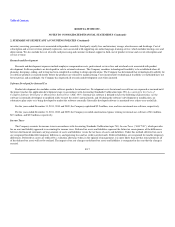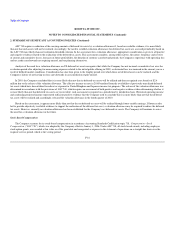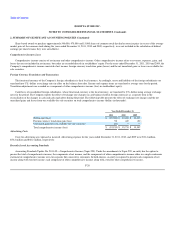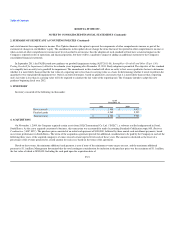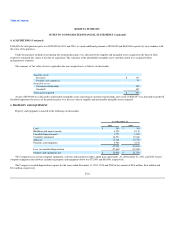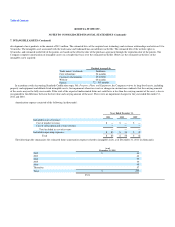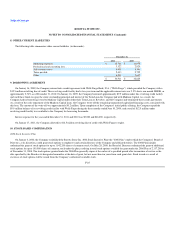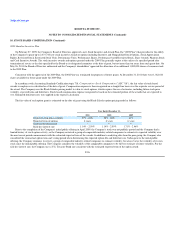Rosetta Stone 2011 Annual Report Download - page 98
Download and view the complete annual report
Please find page 98 of the 2011 Rosetta Stone annual report below. You can navigate through the pages in the report by either clicking on the pages listed below, or by using the keyword search tool below to find specific information within the annual report.
Table of Contents
ROSETTA STONE INC.
NOTES TO CONSOLIDATED FINANCIAL STATEMENTS (Continued)
2. SUMMARY OF SIGNIFICANT ACCOUNTING POLICIES (Continued)
inventory receiving, personnel costs associated with product assembly, third-party royalty fees and inventory storage, obsolescence and shrinkage. Cost of
subscription and service revenue primarily represents costs associated with supporting our online language-learning service, which includes hosting costs and
depreciation. We also include the cost of credit card processing and customer technical support in both cost of product revenue and cost of subscription and
service revenue.
Research and Development
Research and development expenses include employee compensation costs, professional services fees and overhead costs associated with product
development. Software products are developed for sale to external customers. The Company considers technological feasibility to be established when all
planning, designing, coding, and testing has been completed according to design specifications. The Company has determined that technological feasibility for
its software products is reached shortly before the products are released to manufacturing. Costs incurred after technological feasibility is established have not
been material, and accordingly, the Company has expensed all research and development costs when incurred.
Software Developed for Internal Use
Product development also includes certain software products for internal use. Development costs for internal use software are expensed as incurred until
the project reaches the application development stage, in accordance with Accounting Standards Codification topic 350, Accounting for the Costs of
Computer Software Developed or Obtained for Internal Use ("ASC 350"). Internal-use software is defined to have the following characteristics: (a) the
software is internally developed, or modified solely to meet the entity's internal needs, and (b) during the software's development or modification, no
substantive plan exists or is being developed to market the software externally. Internally developed software is amortized over a three-year useful life.
For the years ended December 31, 2011, 2010 and 2009, the Company capitalized $2.5 million, zero, and zero in internal-use software, respectively.
For the years ended December 31, 2011, 2010 and 2009, the Company recorded amortization expense relating to internal-use software of $0.4 million,
$0.3 million, and $0.5 million, respectively.
Income Taxes
The Company accounts for income taxes in accordance with Accounting Standards Codification topic 740, Income Taxes ("ASC 740"), which provides
for an asset and liability approach to accounting for income taxes. Deferred tax assets and liabilities represent the future tax consequences of the differences
between the financial statement carrying amounts of assets and liabilities versus the tax bases of assets and liabilities. Under this method, deferred tax assets
are recognized for deductible temporary differences, and operating loss and tax credit carryforwards. Deferred liabilities are recognized for taxable temporary
differences. Deferred tax assets are reduced by a valuation allowance when, in the opinion of management, it is more likely than not that some portion or all
of the deferred tax assets will not be realized. The impact of tax rate changes on deferred tax assets and liabilities is recognized in the year that the change is
enacted.
F-17




